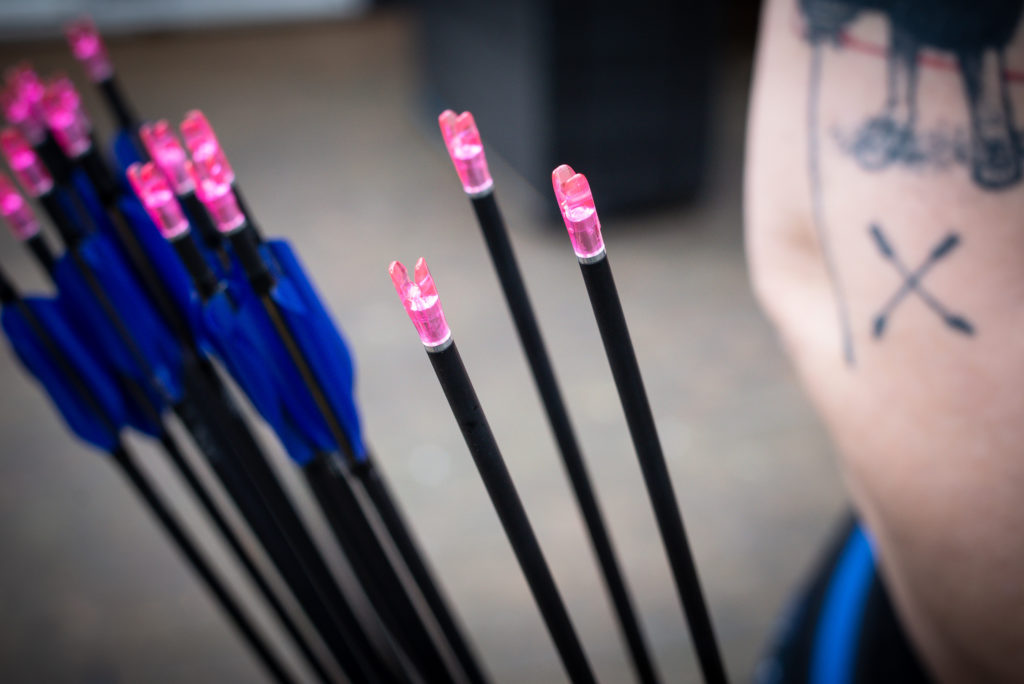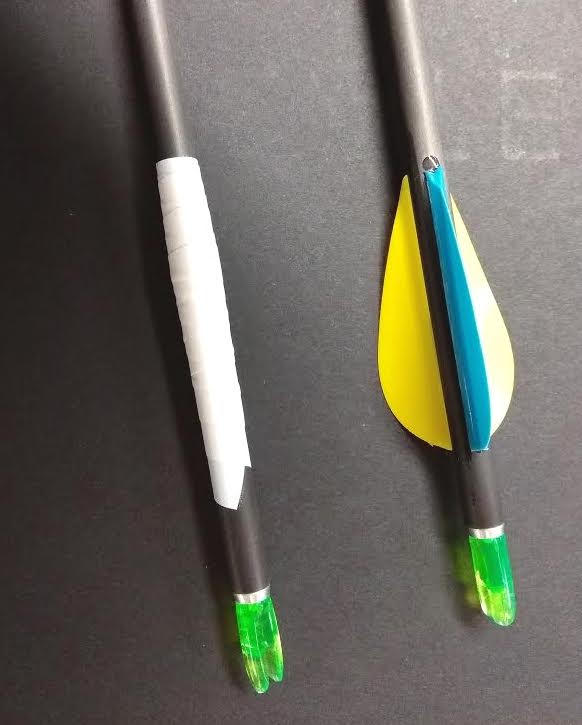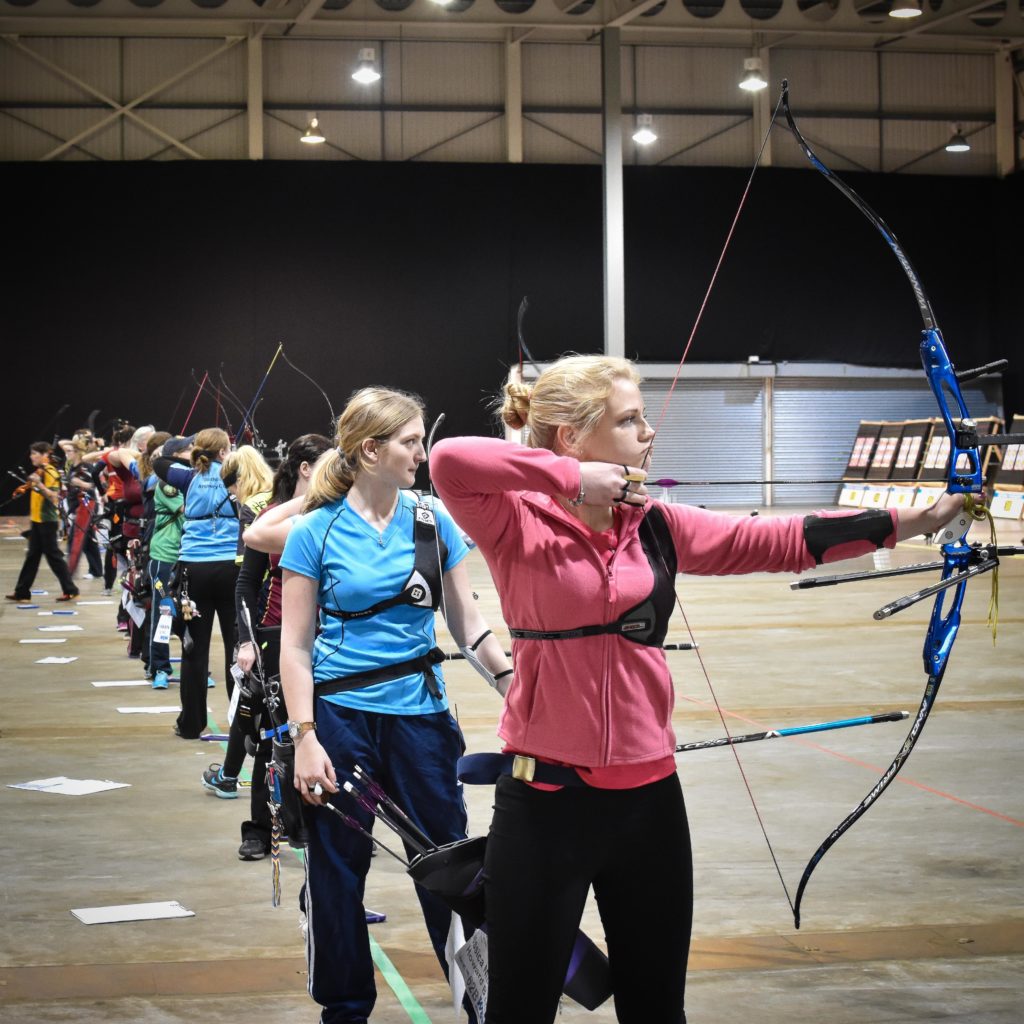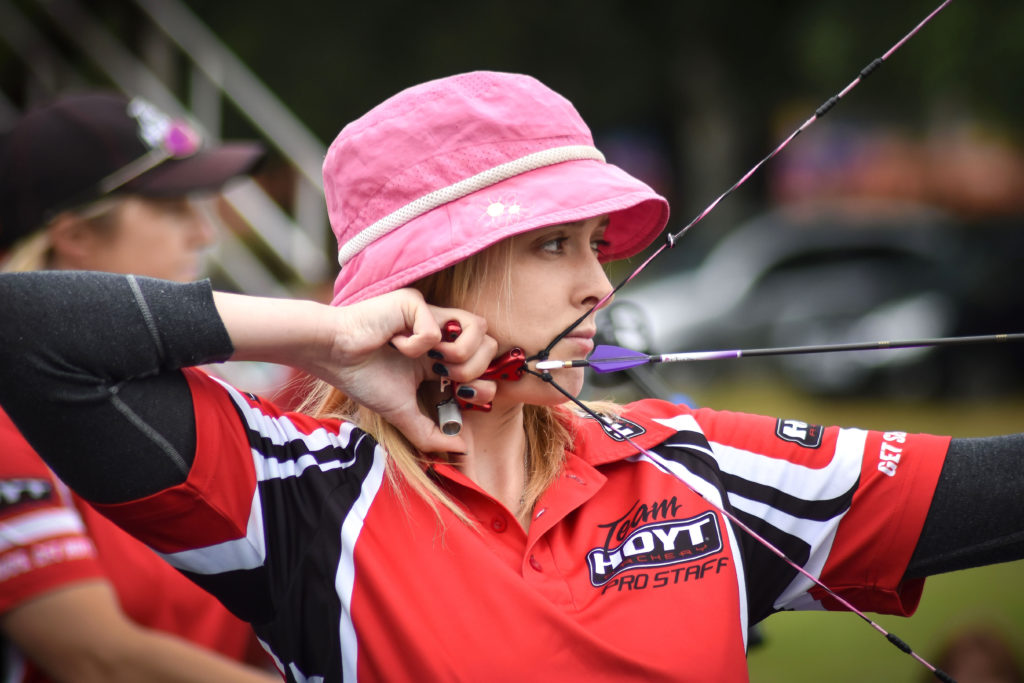Our expert panel answers your questions. Send yours to john.stanley@futurenet.com
Q: I’ve got a new set of arrows and one is a bareshaft as normal for tuning. But how often should I shoot it? Seems a bit of a waste of an arrow to just sit in the quiver.

Andrew Smith says: Arrows change over time so you should never keep one (or more) solely as a bareshaft, because when you come to use it, it will behave differently to your regularly shot fletched arrows. If you need to do a bareshaft test, then make one out of your set of arrows, picking one that you know will group with all the rest.
A bareshaft test result compares where the bareshaft lands in relation to your fletched arrows. It is a cheap way to find out how your arrows are flying without the additional steerage of the vanes, the straighter and closer it lands in the target to the fletched arrows the better. It also confirms whether you have the correct spined shafts and what action may be needed to improve arrow flight.
To tape or not to tape? By not putting tape on the bareshaft in place of the vanes, the front of centre balance will be too front heavy, the shaft will not have the same overall mass weight and the spine will give a weaker result compared to your fletched arrows, even when using light spin wings, making any results and conclusions useless.
I use 3/4 of an inch of insulation tape wrapped flat around the shaft as shown. How much tape? It should be enough so that your bareshaft balances at exactly the same point on the shaft as your fletched arrows.
You can only bareshaft test to your ability, so don’t try and copy the “ideal” results printed in many books. Many archers will struggle to consistently get three fletched arrows in such a tight group, so just try to ensure that your bareshaft lands within your average group size. The better you get, the smaller this becomes and the better your arrow flight.

For me a bareshaft test is most useful when selecting the correct spine of shaft and for checking that all the shafts in a set group together. Once I have selected my shafts and cut and pointed them, before fletching I shoot all my arrows (no tape required, as they should be all identical) at 30m to see if any of the set do not group together. All that is usually required to correct a stray arrow is to turn the nock a fraction to get it landing within my average group.
Once you have your bow set up as you like it, a bareshaft test result at 18m is worth conducting and recording the position of the fletched and bareshaft, as this result can be easily replicated and reduce the need to start your bow tuning from scratch, if you replace a piece of equipment after a failure.
Once you have your arrows with the bareshaft sitting within your average group size, it should not really be needed, as any further tuning to get smaller groups is conducted with your fletched arrows.
Q: What’s the best way to progress through the UK structure? i.e. just compete and see if you get noticed, or is there some other method? There seems to be no structure to UK archery with most clubs focused on field archery and no decent facilities to train at, year round.

Bryony Pitman says: At a local level, most counties will have a county team, this is usually selected based on the archers submitting their best scores of the season and the team selected based on ranking (top 3 or 4). This process can normally be found on a county website and tends to be the same for juniors and seniors.
If you are looking to progress to national squad level then the easiest way is to compete at national tour events and national championships to get noticed. Archery GB coaches do attend these events and pay attention to archers consistently reaching the minimum selection scores. Currently these scores are 2×650 for men and 2×630 for women.
Consistently making medal matches and being competitive with current national squad archers will also get you noticed and then you may be invited to train at Lilleshall.
To get to this level in the first place though you may have to find a coach that you get on well with to help progress your technique. A lot of coaches involved in the AGB performance pathways teach a similar technique, which means less change once you’ve got the scores!
Alternatively, watch videos of the worlds best archers on YouTube and try to copy their technique, I know many archers who have taught themselves to a high standard this way.
The structure currently in place is aimed mostly at juniors. The pathway for them is more straightforward and can be found on the AGB website. It consists of a national age group academy followed by a conversion academy. It is possible to qualify for the junior team without being already involved in this structure, again by just achieving the scores laid out in the selection policy.
Facilities do depend on where you’re based. For me I’ve found the opposite with very limited options for field archery but loads for target (based in West Sussex).
There are a lot of clubs around that have land used only for archery and therefore it can be used 24/7 all year round but equally a lot of clubs are limited for training times due to sharing a sports field with schools/football/rugby etc. You can try the Archery GB club finder to find somewhere that suits your needs better.
Thanks to Ian Furniss for the question
Q: Punching: what is it and why should I not do it?

Lucy O’Sullivan says: Most archers have heard the phrase ‘punching’ in reference to compound archery; and no, it’s not referring to archers having to battle it out with fists for a win.
It is what people refer to when the trigger (on a trigger release) is aggressively pressed to make the shot go off. This is the opposite of the ideal shot with the archer wrapping their thumb around the trigger and using their back to increase pressure on the release aid, allowing the trigger to be ‘squeezed’ off.
Punching usually occurs when an archer starts anticipating the release of the bow, which can eventually cause an archer to flinch or even get target panic. (This usually manifests as symptoms of panic when the dot or fibre is hovering over the gold, causing the archer to anticipate the shot and punch the trigger).
A strong shot in archery should be a consistent ‘surprise’ release thereby eliminating the flinching of shots or any movement of the bow to try and steer the arrow into the gold.
I used to punch my trigger when I was younger, and it got so bad that I ended up aiming in the blue above the target and swiping my bow down and punching the trigger as soon as I saw the gold.
I ended up moving to a hinge release and then a back tension release, to really get over punching a shot and anticipating the release of my bow. I have now developed a surprise release, and my archery is much more consistent and the longevity of my career has been much greater than had I continued punching.
Of course you may see some archers shooting very well by punching their shots, and some have even won major medals with it. (Some manage this with a hinge release too, over-rotating the release to get the shot to break).
More aggressive use of the trigger can also be useful in adverse weather, but in the long term it can lead to gold panic, and the inability to create a good shot while aiming in the gold without flinching or steering the bow, which is very difficult to overcome.
Broadly, a perfect technique would be drawing up, anchoring, wrapping your thumb around the trigger and then *almost* forgetting about it, and working on your back and shoulders, squeezing them together to get the shot to release, continue aiming in the gold and – most importantly – trusting that your shot will go off in the middle.

